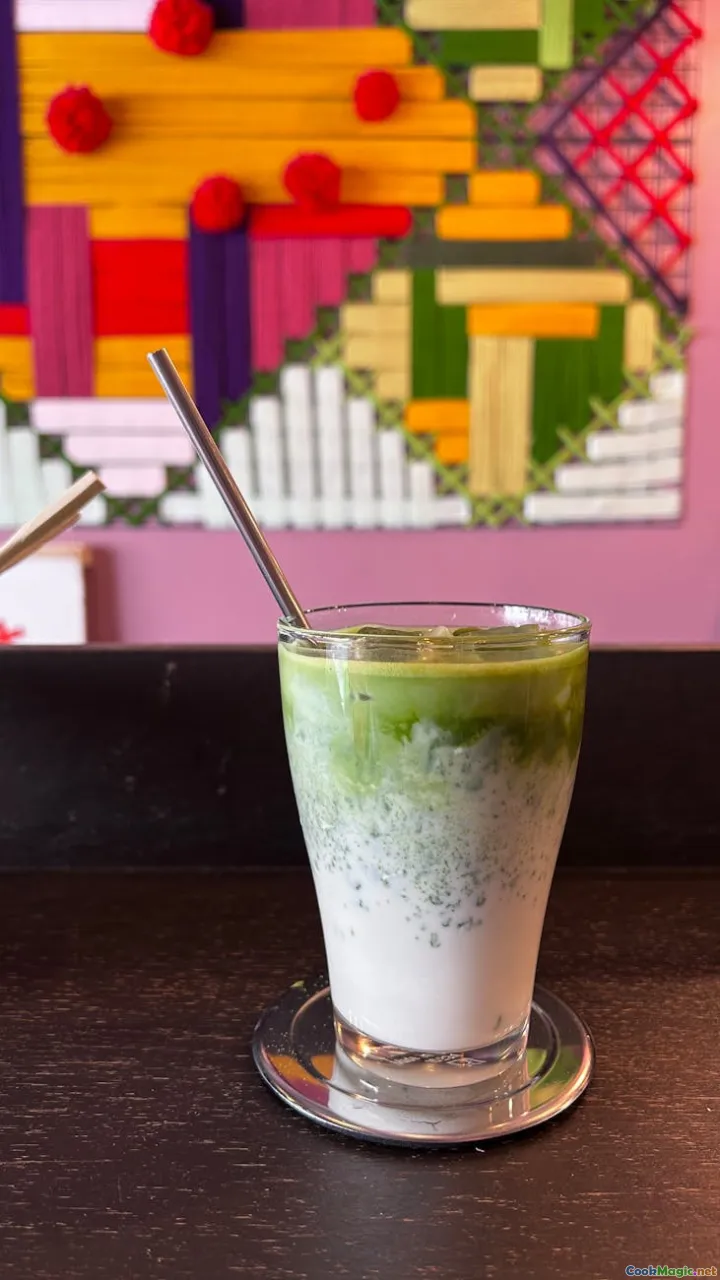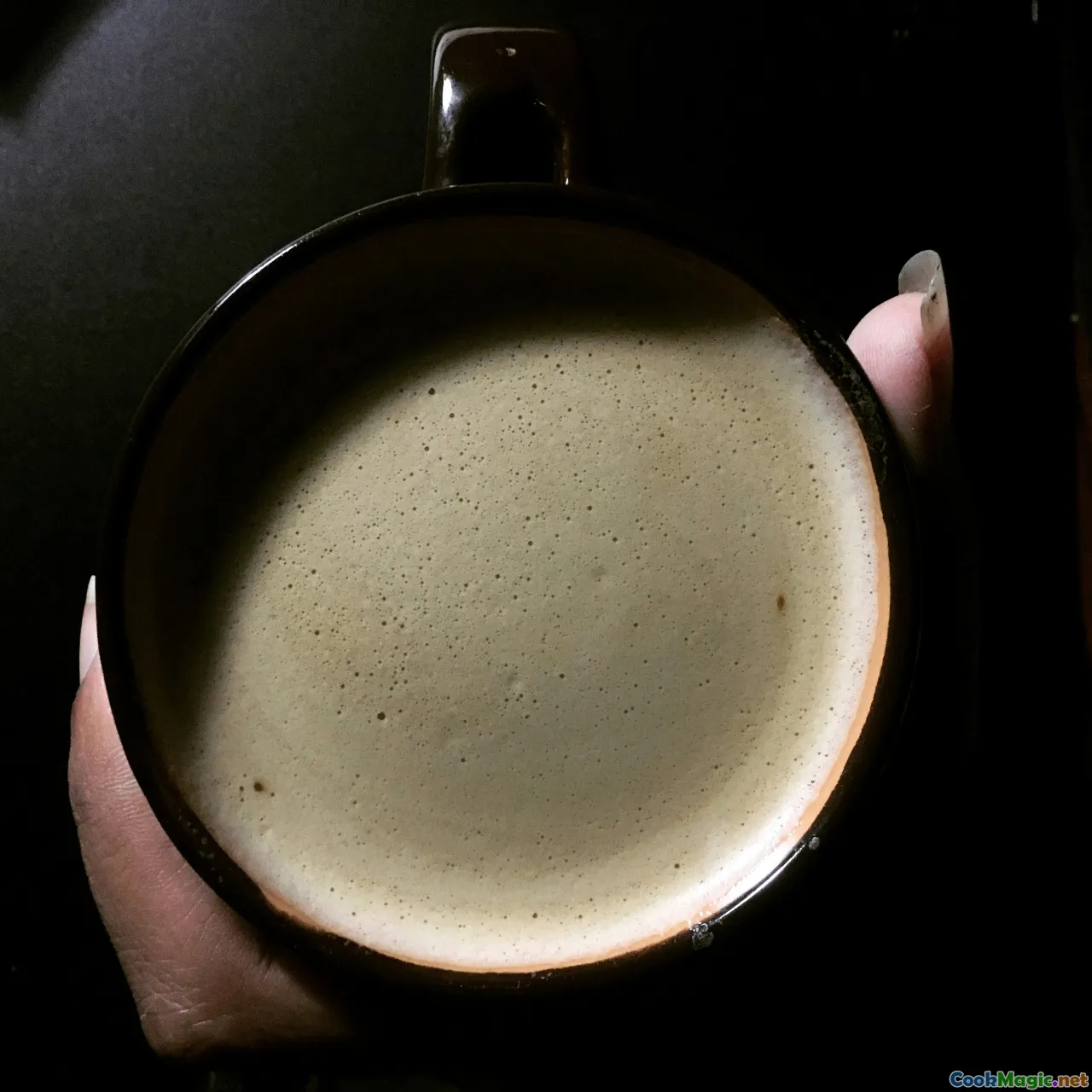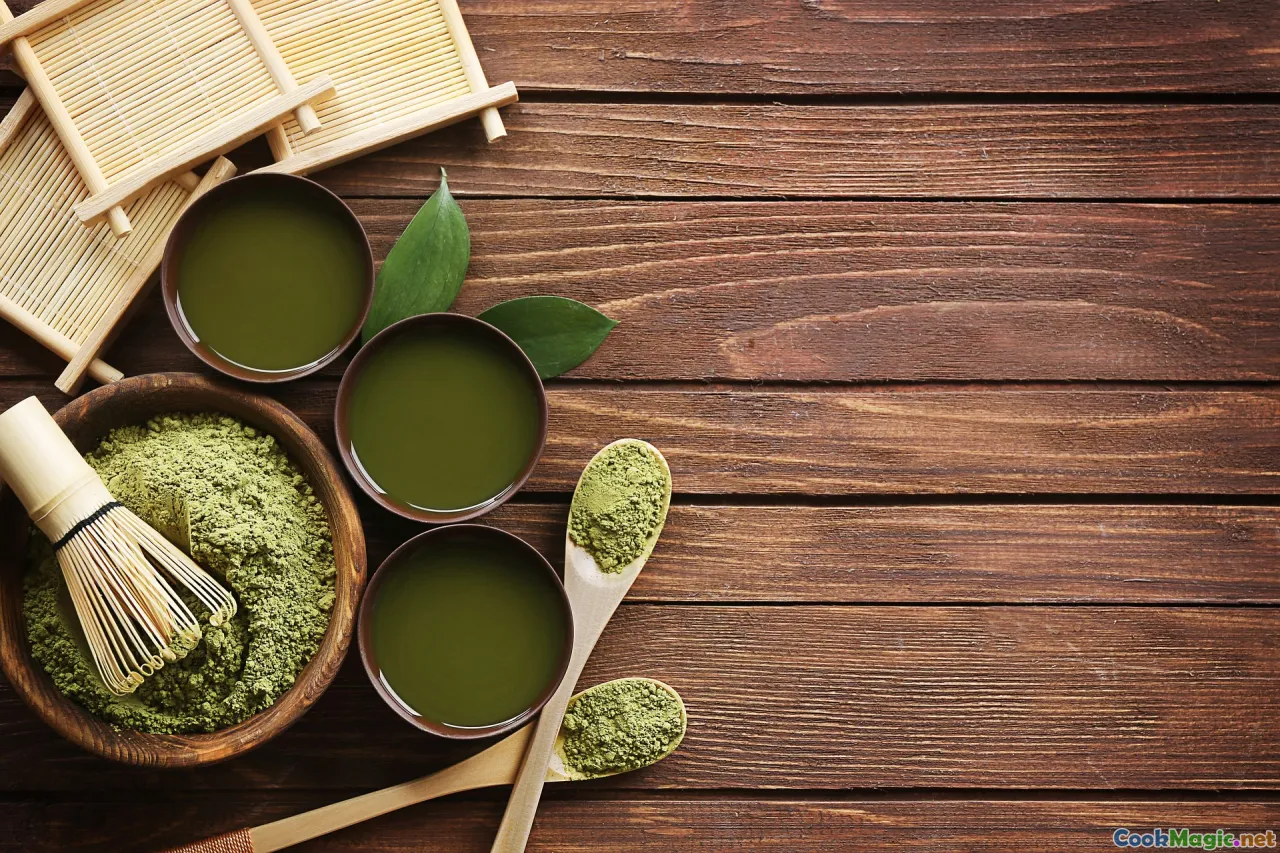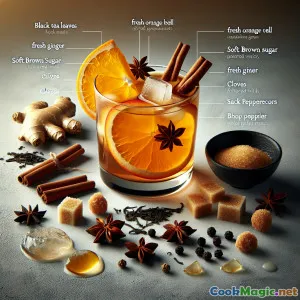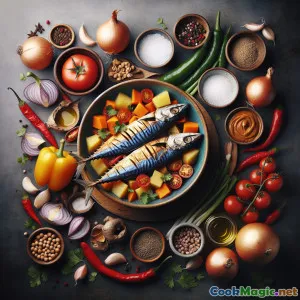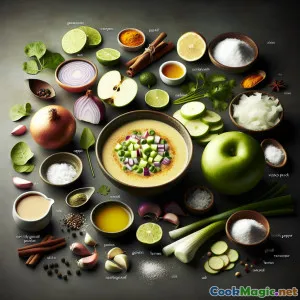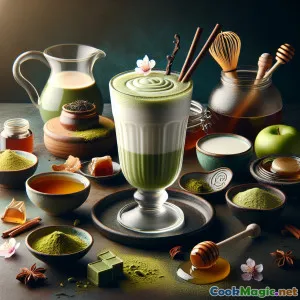
होइचिज़ माचा हार्मनी: एक ट्विस्टेड इंग्लिश चाय लट्टे
(Hojicha Matcha Harmony: A Twisted English Tea Latte)
(0 समीक्षाएँ)सामग्री
-
2 tsp होजिचा ढीले पत्तियों वाला चाय
(Japanese roasted green tea, or tea bags if unavailable)
-
1 tsp मैच पाउडर
(High quality, ceremonial grade preferred)
-
350 ml पूर्ण दूध
(Can substitute with oat or almond milk for non-dairy version)
-
125 ml गर्म पानी
(Boiled and slightly cooled (80°C for matcha, 95°C for hojicha))
-
2 tsp शहद
(Or maple syrup for vegan option)
-
1/4 tsp वनीला एक्सट्रेक्ट
(Adds gentle floral notes; optional)
(Japanese roasted green tea, or tea bags if unavailable)
(High quality, ceremonial grade preferred)
(Can substitute with oat or almond milk for non-dairy version)
(Boiled and slightly cooled (80°C for matcha, 95°C for hojicha))
(Or maple syrup for vegan option)
(Adds gentle floral notes; optional)
पोषण
- परोसने की संख्या: 2
- सेवा आकार: 1 मग (300ml)
- Calories: 110 kcal
- Carbohydrates: 15 g
- Protein: 5 g
- Fat: 4 g
- Fiber: 1 g
- Sugar: 9 g
- Sodium: 60 mg
- Cholesterol: 12 mg
- Calcium: 140 mg
- Iron: 0.2 mg
निर्देश
-
1 - Steep the hojicha:
Place hojicha leaves in a teapot. Pour 95°C hot water over them and steep for 3 minutes, then strain.
-
2 - Whisk the Matcha:
In a small bowl, sift matcha powder. Add 50ml of 80°C water and whisk vigorously with a bamboo whisk or milk frother until frothy.
-
3 - Heat and froth the milk:
Warm milk in a saucepan over medium heat until steaming. Optionally use a steam wand or frother to create a velvety foam.
-
4 - Combine and sweeten:
Divide steamed milk between two heated mugs. Pour the steeped hojicha evenly over each. Swirl in honey and vanilla extract, stirring gently.
-
5 - Finish with matcha:
Top each latte with a float of freshly blended matcha. Optionally sprinkle a pinch of matcha powder for garnish. Serve immediately.
Place hojicha leaves in a teapot. Pour 95°C hot water over them and steep for 3 minutes, then strain.
In a small bowl, sift matcha powder. Add 50ml of 80°C water and whisk vigorously with a bamboo whisk or milk frother until frothy.
Warm milk in a saucepan over medium heat until steaming. Optionally use a steam wand or frother to create a velvety foam.
Divide steamed milk between two heated mugs. Pour the steeped hojicha evenly over each. Swirl in honey and vanilla extract, stirring gently.
Top each latte with a float of freshly blended matcha. Optionally sprinkle a pinch of matcha powder for garnish. Serve immediately.
होइचिज़ माचा हार्मनी: एक ट्विस्टेड इंग्लिश चाय लट्टे :के बारे में ज़्यादा जानकारी
Hojicha Matcha Harmony – An East & West Melange Overview
Tea is an inseparable part of British culture, so much so that the ‘cuppa’ defines daily routines and gets immortalised in idioms and folklore. The Japanese, too, champion tea: theirs is an elaborate ceremony of precision, tranquility, and meditative sip. What happens when distinctly roasted Japanese hojicha collides with radiant matcha in a silky English milk base? The magic that emerges is ‘Hojicha Matcha Harmony’, a drink embodying the old and new, robust earthiness balanced by fragile green energy with the gloved touch of English comfort.
History & Cultural Significance
Hojicha is a roasted Japanese green tea that emerged in Kyoto in the early 20th century, developed from the need to make use of tea stems and tops less suited to premium brews. Its toasty, coffee-esque character made it the perfect soothing tè for nights and non-caffeine sippers. Matcha, the fine, electrical green powdery tea, traces its roots back to Japanese Zen Buddhist monks who consumed it to remain alert throughout meditation, a tradition that flourished since the 12th century.
On the other side, England’s national love for milk tea dates from the 17th century. Afternoon tea and the now-famous London café scene flourished through the fusion of tea acts and merchant spice (often integrating loose leaves with creamy English cow’s milk for a nod to luxury and comfort).
By combining the two cultures – not through confrontation, but careful compliment – Hojicha Matcha Harmony becomes a canvas for culinary conversation. It playfully balances hojicha’s roasted chestnut nuances against grassy matcha vibrancy, unified in the pillow soft gentleness of a steamed milk base. The gentle swirl of honey (or local English golden syrup) and the faintest hint of vanilla brings these global influences together into a single conversational mug.
Unique Aspects & Chef’s Tips
-
Complex Layering: The drink achieves depth through the weighty, nimble charred caramel notes of hojicha and the energetic lift of matcha’s vegetative brightness. Each sip guides the palate between comfort and invigoration.
-
Balanced Sweetness: Honey, minimal as it may be, bridges earthiness with sweetness—layered just enough not to overpower the tea.
-
Properly Steep & Froth: Steep hojicha patiently (not rushed) and never overheat the milk. The ultra-fine nature of matcha means it should be whisked at the end to retain its vibrancy and prevent clumping.
-
Possibilities: For a vegan alternative, oat milk performs beautifully, bringing creaminess that echoes Dorset clotted milks. Maple syrup is an excellent sweet alternative and can echo the autumnal flavors of roasted hojicha.
-
A Drink of Harmony and Conversation: Serve tradition with innovation – alongside a slice of tea loaf, a Japanese monaka, or on its own as a thoughtful study cup or dusk companion. There’s no sweeter conversation than one shared between two tea cultures.
Personal Thoughts
What excites me most about the Hojicha Matcha Harmony isn’t just its taste, as luxurious as it may be. In a rapidly fusing culinary world, this drink reflects respectful fusion: bridges built, not walls. As someone fascinated by tea in all its histories, ceremony, drama and quiet moments, I believe this latte embodies the best meeting place—gentle enough to cast off anxieties, stirring enough to awaken your roots, wherever they may lie.
Present this creation before friends, loved ones, or even newcomers to fusion drinks. Invite them to guess the notes, tell their own tea stories, and toast the endlessly innovative spirit of two proud tea nations.
Sip slowly. Taste history. Enjoy your Hojicha Matcha Harmony.

